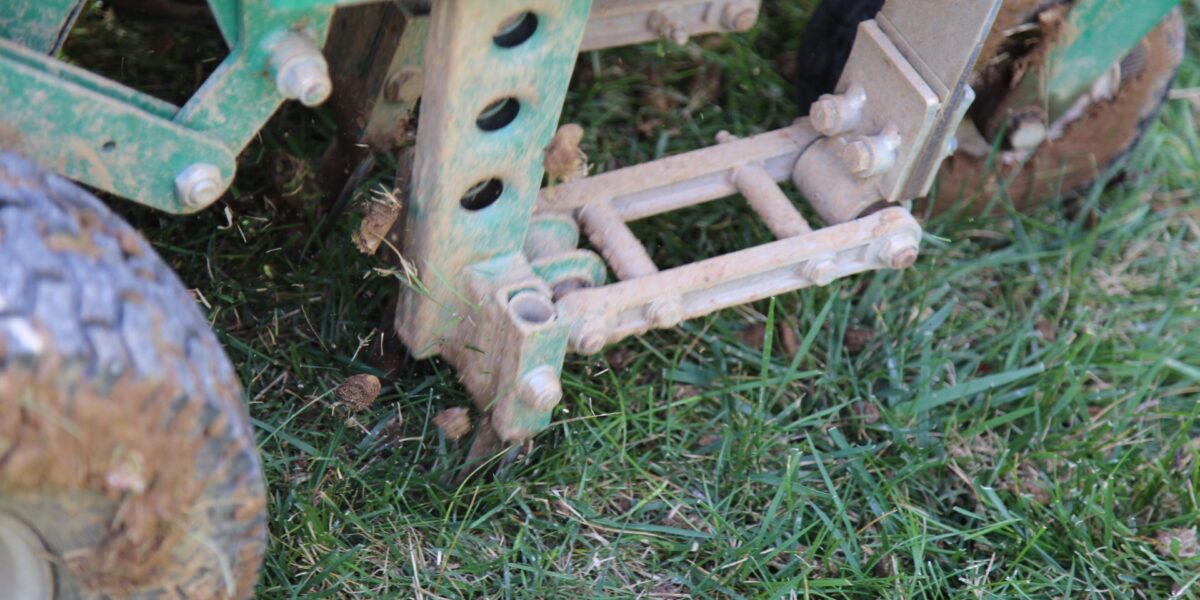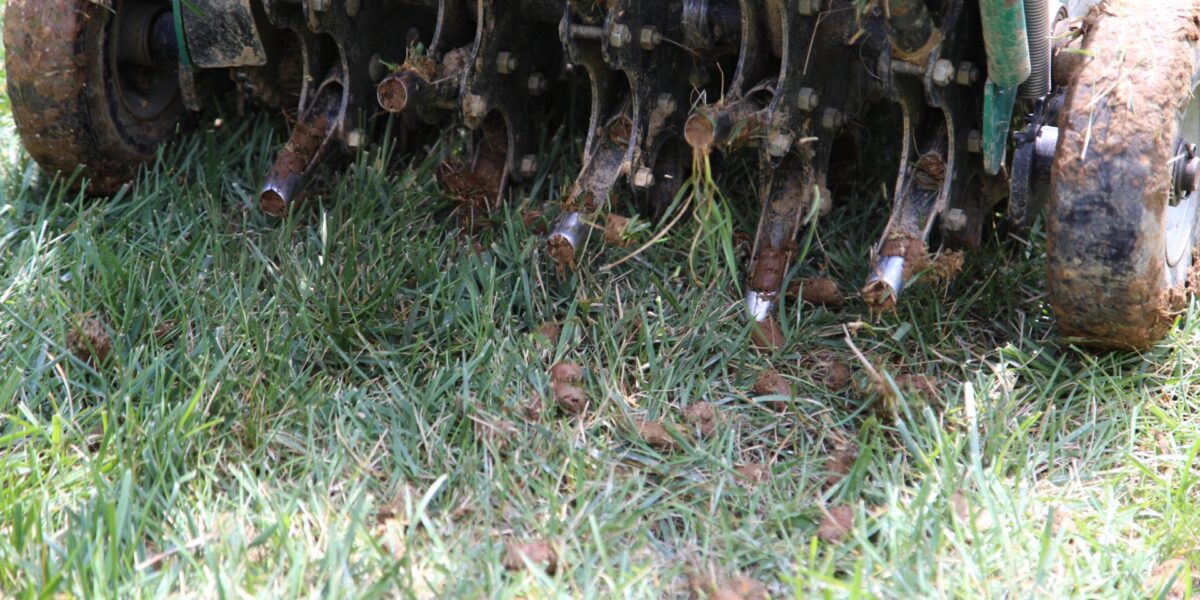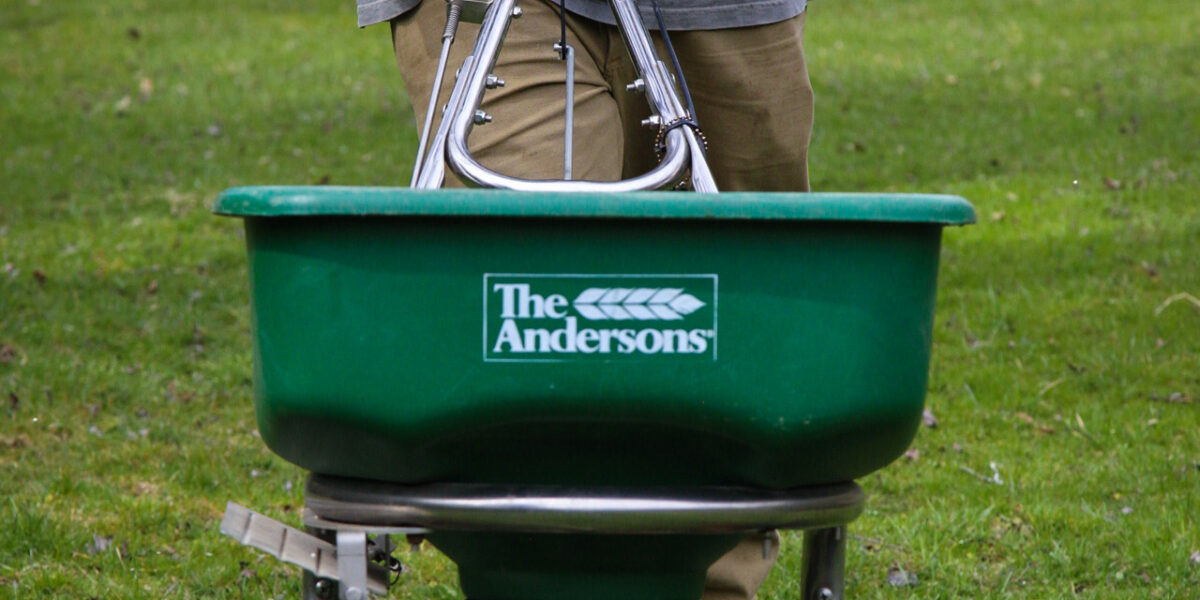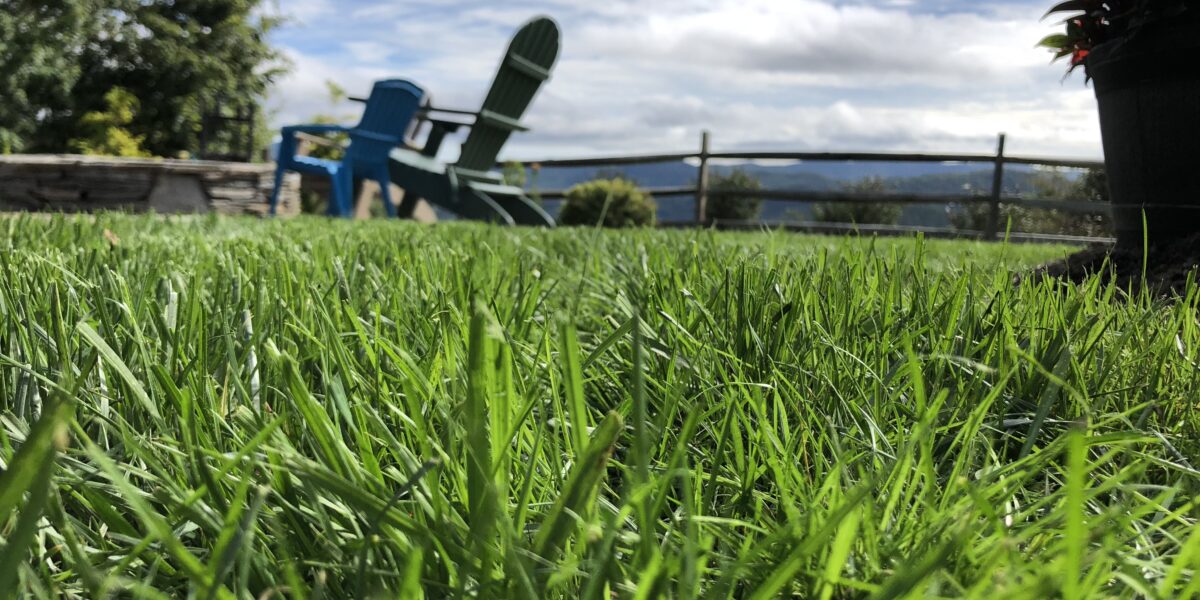Along with fertilizing and consistent watering techniques, core aeration and over-seeding are vital practices to maintaining overall turf growth.
You may be asking, "What exactly is aeration?" By definition, aeration is the naturally occurring process of air exchange between the soil and its surrounding atmosphere. In layman's terms, aeration is the process of removing small plugs of thatch and soil from the lawn to improve air exchange within the soil. While it is most commonly referred to as "core aeration" within the lawn and maintenance industry, you may also have heard it mentioned as soil cultivation or coring, spiking, and slicing. In order to maintain an attractive lawn, you must have a healthy root system and in order to create a healthy root system, there must be oxygen in the soil. Clay and compacted soils restrict oxygen supply, thus inhibiting proper root growth. Aeration allows air into the soil combating such problems as compaction, thatch, clay soils, and heavy traffic to promote a healthier root system which in turn creates a healthier, thicker lawn.
There are numerous benefits to aeration, including:
- increased water and nutrient absorption by improving air exchange between
the soil and surrounding atmosphere - increased root development
- improves soil compaction
- helps break up the thatch layer
- maintains turf density
- helps with weed suppression in combination with proper mowing heights
- makes the lawn more heat and drought tolerant
We always recommend overseeding at the time of aeration as it allows the proper nutrients within the seeds to establish deeper in the soil right within the turf's root system. We have found this to be the best way to create a denser, greener, healthier lawn and encourage a wider range of growth. As your lawn ages, it grows weaker and is less likely to spread. Over-seeding introduces new seed into your lawn which is often more heat and drought resistant, thus promoting new growth that is more likely to spread and develop into a thicker, greener lawn.
More Services
- Aeration & Seeding
- Boulder Placement
- Fertilization Programs
- Fire Pits & Fireplaces
- Hardscapes
- Landscape Design
- Landscape Installation
- Landscape Maintenance
- Lawn Maintenance
- Mulch & Pine Straw
- Outdoor Lighting
- Patios, Walkways & Driveways
- Perennials & Annuals
- Planting
- Pruning & Trimming
- Retaining Walls & Stairs
- Seasonal Clean ups
- Snow Removal & Ice Management
- Sod & Hydroseeding
- Trees & Shrubs
- Water Features





